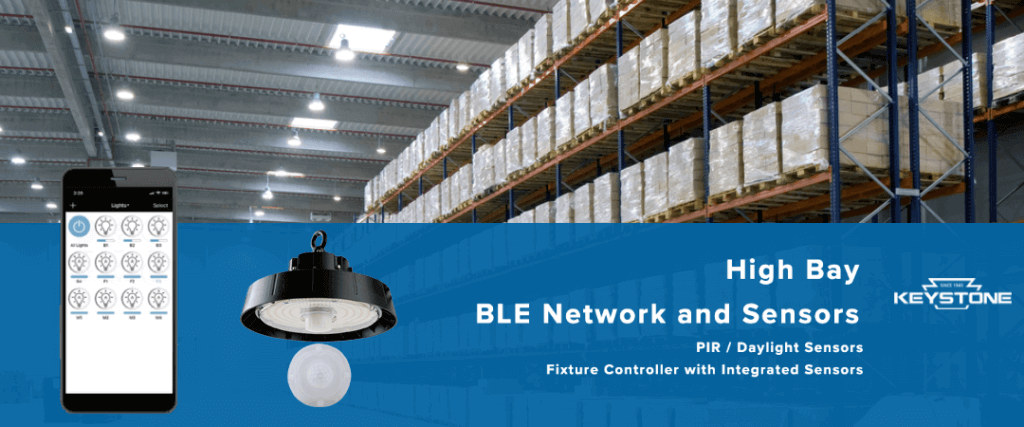No products in the cart.

Let There Be (Automated) Light: The Upside and Downside of Sensors for Lighting Control
When lights are always on, the energy costs can quickly add up, and keeping them on for too long can cause them to overheat and possibly malfunction early into their warranty period and life expectancy. To help ensure that lights are only used when necessary, LED manufacturers have developed different types of sensors that work with their line of LED products with some fully integrated into the light fixtures.
By using sensors, lights can be controlled to turn on and off in response to individual or a combination of conditions including occupancy, motion, or levels of natural light, ensuring that they are used only when they are needed, making it easier for people to move freely without having to constantly switch lights on and off, and improves safety by providing visibility in otherwise dark and empty areas. They help reduce consumption, contribute to energy savings, and help extend the lifespan of the light bulbs.
About Light Sensors

There are 2 major groups of sensors for lighting control. Sensors that detect motion and occupancy (e.g. Microwave, PIR and Ultrasonic), are intended for indoor applications. Sensors that detect natural light (e.g.Photocell and Daylight Harvesting), are intended for areas with access to natural light and outdoor applications.

Sensors are installed separately or integrated into modern LED fixtures. Sensors are available as external controllers for a network group of lights e.g. installed on the wall, ceiling or fixture or integrated into modern LED fixtures e.g. photocell sensors on wall packs. Some sensors can be set up to adjust their sensitivity depending on the traffic or availability of natural light.

Sensors can be linked to advanced network lighting controls. Sensors can be linked to a Bluetooth Mesh / NLC system that sends sensor data to other lights in a network for automated control, energy management, and rerouting, which can lead to significant cost savings over time. Read on to know more about Bluetooth Mesh / NLC and how they work together with light sensors.

Sensors also control brightness levels. Also known as “Bi-Level Lighting Controls”, it allows the user to adjust the level of brightness in two ways (up/down). Traditionally, it requires an external switch or dimmer to adjust the light levels based on the time of day or occupancy. Modern LED light fixtures includes bi-level lighting controls for controlling brightness levels.

Dual-technology sensors work together for on/off and dimming control. Modern LED fixtures and external sensors combine at least two sensing technologies working together for controlling light and brightness levels e.g. PIR / Daylight Harvesting where PIR sensors control lights with movement and Daylight Harvesting sensors adjust brightness with available light. With dual-technology sensors, you can be sure that your space is always well-lit when needed, and not over-lit at all times.

Sensors are interfered by certain conditions. Sensors that automate lighting offer numerous advantages but they are not without some drawbacks. Sensors can be impeded by elements in its immediate surroundings and therefore should be installed correctly and with caution in order to function properly. Carefully consider the upsides, downsides and limitations of each type of light sensor before making a final decision.
Sensors that Detect Motion and Occupancy
Motion sensors detect movement within a space, while occupancy sensors detect presence regardless of movement. Microwave, PIR (Passive Infrared), and Ultrasonic technologies are commonly used in detecting motion and occupancy, and all three technologies are almost exclusively used indoors.
Microwave Sensors
Microwave motion sensors use high-frequency radio waves to detect movement within their detection range, and when it detects motion, the lights turn on. It is effective at short distances but can have problems with false alarms due to over-sensitivity and interference from other nearby movements and signals.
Microwave Sensors

Fixture Integrated Microwave Sensor

Ceiling-mounted Microwave Sensor

Fixture-mounted Microwave Sensor

Surface-mounted PIR / Microwave Sensor
Upside:
- Can detect motion at a distance of up to 20 feet in one or all directions (400 ft²).
- Adjustable distance settings so that the motion sensor will only detect movement at certain distances.
- Microwave signals, such as those emitted from cell phones and routers, are non-ionizing forms of radiation and do not cause long-term damage to humans.
Downside:
- As a motion sensor, it can be overly sensitive and set off the lights unnecessarily when placed in areas near trees, plants, and moving machinery.
- As an occupancy sensor, it can be interfered with by continuous movements e.g. bodies of water, and ventilation fans.
- Affected by gusts of wind, rain, and extreme weather conditions.
PIR Sensors
PIR sensors, or passive infrared sensors, detect the infrared radiation emitted by objects including the human body that have a temperature above absolute zero. It is effective at long distances and has low false alarm rates but can be affected by other heat sources within the same space.
PIR (Passive Infrared) Sensors

Ceiling-mounted PIR Sensor

Wall-mounted PIR Sensor

Wall switch Integrated PIR Sensor

Fixture-mounted PIR / Daylight Harvesting Sensor
Upside:
- Integrated into some modern LED fixtures.
- Can detect motion at a distance of up to 30 feet in one or all directions (900 ft²).
- Most PIR sensors work without any external power source by harvesting the available light or using battery sources.
- Can be used to detect both small and large movements at various distances due to its wide sensitivity range.
- Detects heat and is unaffected by gusts of wind and other environmental factors.
Downside:
- Can be affected by changes in temperature and humidity of the environment.
- Affected by other high heat sources like steam, radiators, and heat vents.
Ultrasonic Sensors
Ultrasonic sensors emit sound waves at a frequency too high to be heard by the human ear. The principle is based on the fact that sound waves travel in all directions and can be reflected back to the source when they come into contact with an object.
Ultrasonic Sensors

Ceiling-mounted Ultrasonic Sensor

Wall-mounted Ultrasonic Sensor

Wall Switch Integrated Ultrasonic Sensor

LED Integrated Ultrasonic Sensor
Upside:
- Integrated into some modern LED fixtures.
- Can detect motion at a distance of up to 33 feet to 40 feet in one or all directions (1000 ft² – 1200 ft²).
- Preferred over other types of detection such as infrared due to their wide range of detection and non-contact nature i.e. senses occupancy despite not being in direct line of sight.
- Detects moving objects that are large enough e.g. humans to reflect sound.
Downside:
- May not work effectively in areas with high levels of background noise e.g. heavy machinery or if the motion is slow.
- May be affected by temperature variations in the environment, mostly by heat.
Sensors that Detect Natural Light
Photocell sensors detect natural light and turn light fixtures on in the daytime and off in the nighttime. Daylight Harvesting sensors detect natural light and control light dimmers to maintain appropriate light levels. Both technologies can be used in open and outdoor areas with ample daylight and help reduce energy consumption by using natural light whenever available.
Photocell Sensors (On/Off Control)
Photocell or “dusk-to-dawn” sensors are used to detect light levels and turn lights on or off in response to available natural light. When the light level is lower (i.e. at night) than a predetermined threshold, the sensor will activate a switch that turns on the lights. When the light level rises (i.e. during the day) above the threshold, the sensor will deactivate the switch and turn off the lights.
Photocell Sensors

Fixture-mounted Photocell Sensor

Fixture Integrated Photocell Sensor

Wall-mounted Photocell Sensor

Pole-mounted Photocell Sensor
Upside:
- Comes built-in to some modern LED fixtures.
- Relies on reflected light in the surroundings and functions even on a cloudy day.
- Designed to detect light levels and adjusts accordingly to natural daylight and artificial light sources like streetlights.
Downside:
- Must be installed facing north, not placed under a shade, and not placed under direct sunlight or will risk malfunction and overheating.
- Adjusting the sensitivity can be difficult, making it hard to ensure that the lights come on when needed and don’t stay off when not needed.
Daylight Harvesting Sensors (Dimming Control)
Daylight harvesting sensors monitor the amount of natural sunlight available and adjust the intensity of lighting accordingly.
Daylight Harvesting Sensors

Wall-mounted Daylight Harvesting Sensor

Ceiling-mounted Daylight Harvesting Sensor

LED Integrated Daylight Harvesting Sensor

Fixture-mounted PIR/Daylight Harvesting Sensor
Upside:
- Integrated into some modern LED fixtures along with motion and occupancy sensors and replaces external dimming controls for adjusting brightness.
- Relies on reflected light in the surroundings and functions on a cloudy day.
- Designed to detect light levels and adjusts accordingly to natural daylight and artificial light sources like streetlights.
Downside:
- Must be installed in places with enough natural light e.g. windows or sky lights to work properly.
Timers
Timers for lighting work by setting a specific start and end time for a light to be on or off. This allows you to have the flexibility of turning lights on at different times depending on when you need them lit. By using timers, you can ensure that your lights stay on and off on schedule and won’t unnecessarily waste energy.
Light Timers

Manual Light Timer

Digital Light Timer

Preset Light Timer

WiFi / Smart App Light Timer
Upside:
- Using timers with other sensors ensures that lights stay off on the preset schedules and would not be turned on by the sensors.
Downside:
- When using timers by itself, it relies on preset schedules and do not adapt to current conditions.
Bluetooth (BLE) Mesh Light Controls and Sensors
Bluetooth Low Energy (BLE) Mesh Lighting is an Advanced NLC (Networked Lighting Control) technology that connects fixture controllers, sensors, timers and other devices together to create a network of interconnected and remote-controlled lights.
With Bluetooth Mesh light controls, users can set timers and schedules for their lights, adjust brightness levels remotely, group lights, or even change the color from any device connected to the mesh network, giving complete control over their lighting with the dedicated control app on their phone or tablet.
BLE Mesh systems are relatively easy to install, allowing you to quickly set up the existing fixtures.
Sharkward Wireless Network Gateway
Sharkward is dedicated to the application research, products development, manufacture and marketing for LED lighting controls. The Sharkward Control app is available on the App Store and Google Play. Contact Duralec today to get a quote.
Bluetooth (BLE) Controls and Sensors for Offices
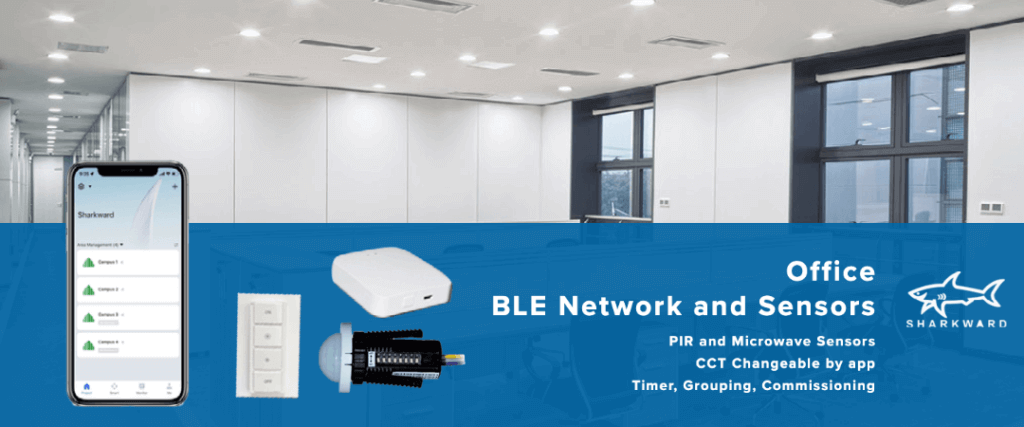
Bluetooth (BLE) Controls and Sensors for Industrial Spaces
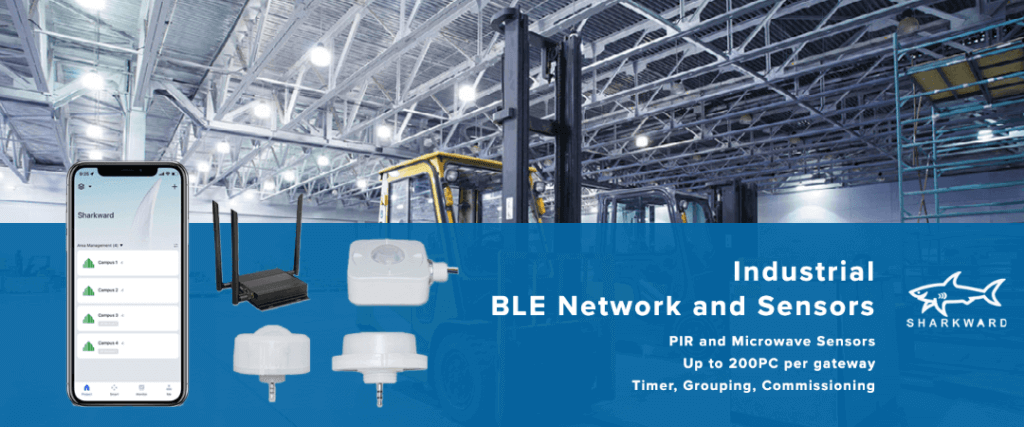
Bluetooth (BLE) Controls and Sensors for Outdoor Spaces
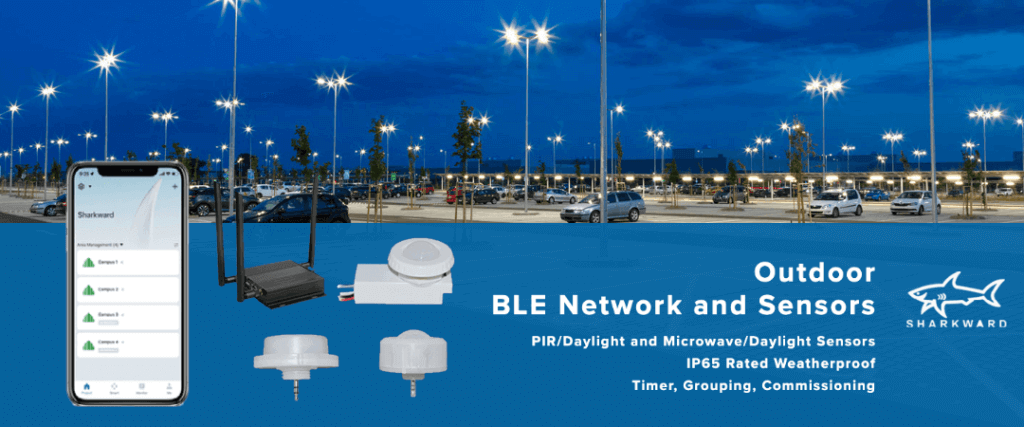
KeystoneTech SmartLoop Wireless Controls
SmartLoop is powerful enough to run a space with multiple zones, but simple enough to program in minutes with your phone—perfect for warehouses, offices, schools, and auditoriums, whether new construction or retrofit. The Keystone SmartLoop Control app is available on the App Store and Google Play. Contact Duralec today to get a quote.
Bluetooth (BLE) Controls and Sensors for Rooms
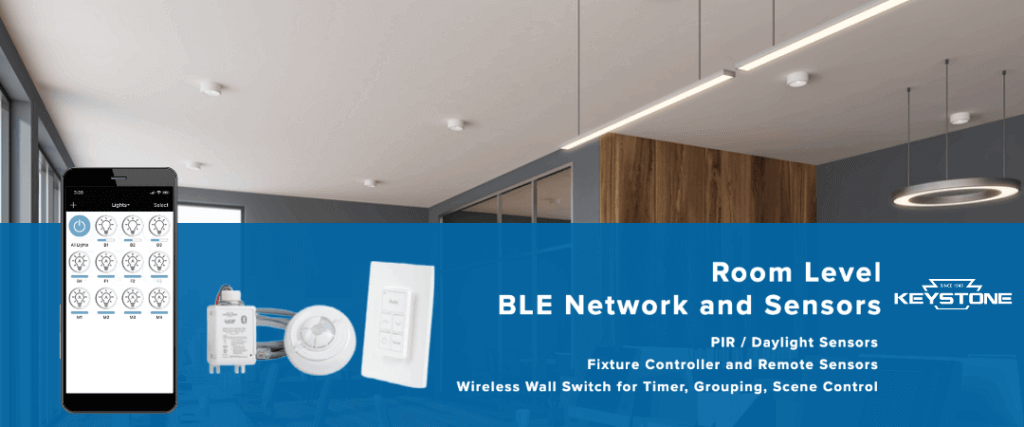
Bluetooth (BLE) Controls and Sensors for Zones / Areas
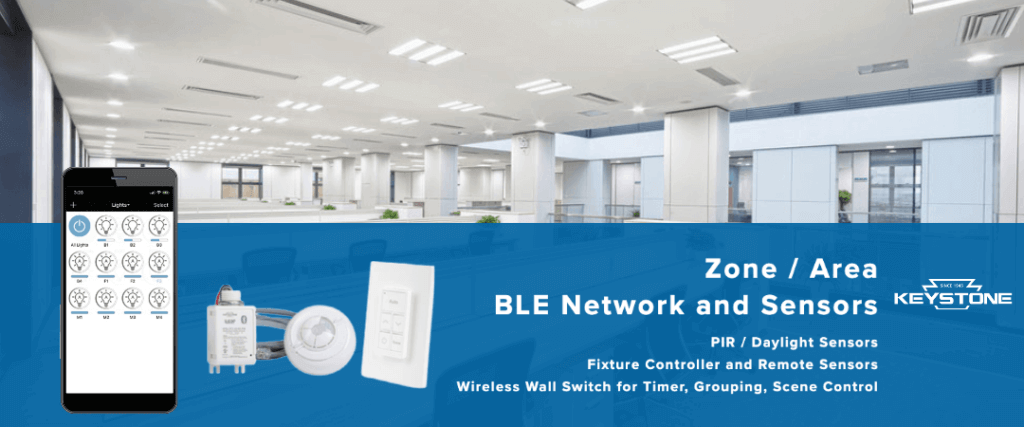
Bluetooth (BLE) Controls and Sensors for Individual Fixtures
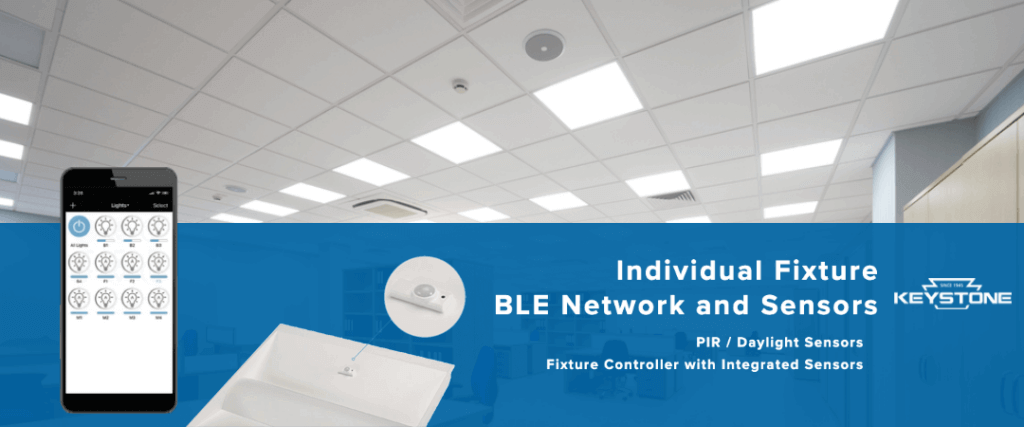
Bluetooth (BLE) Controls and Sensors for High Bays
